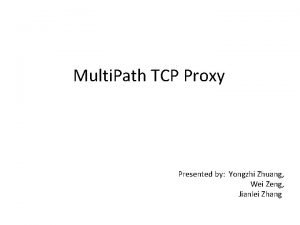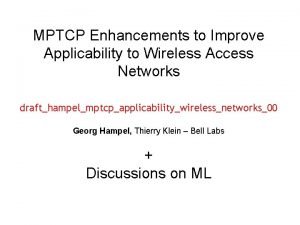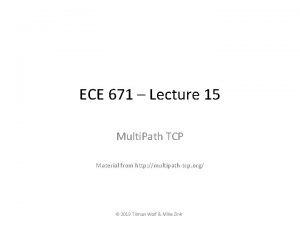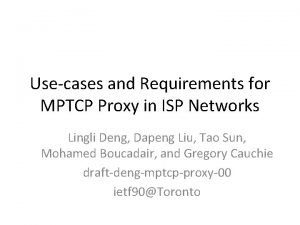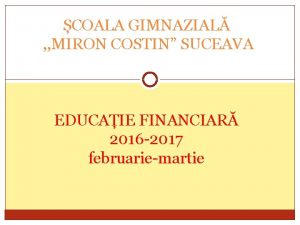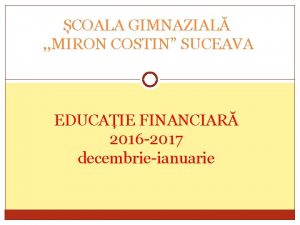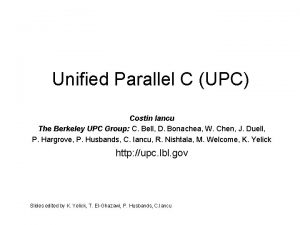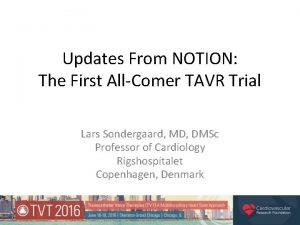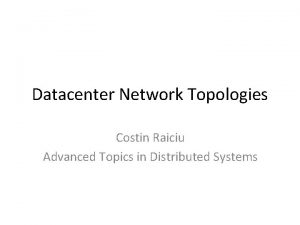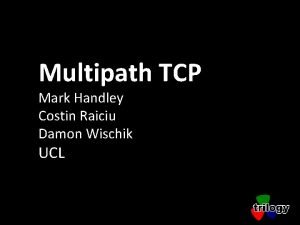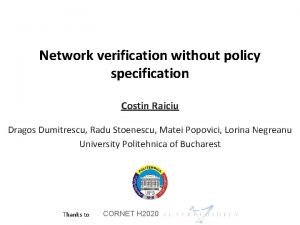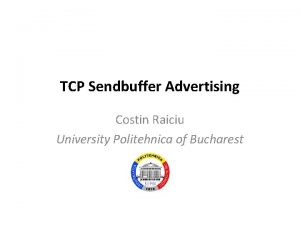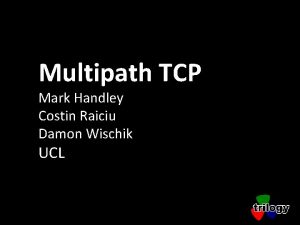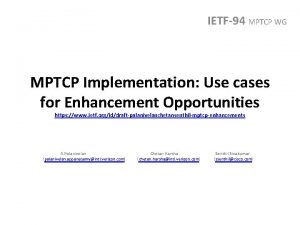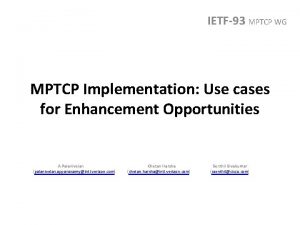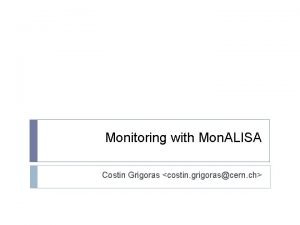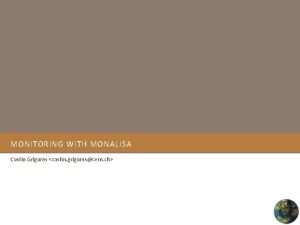MPTCP Protocol Updates draftietfmptcpmultiaddressed03 Alan Ford Costin Raiciu











- Slides: 11

MPTCP Protocol – Updates draft-ietf-mptcp-multiaddressed-03 Alan Ford, Costin Raiciu, Mark Handley, Olivier Bonaventure

Where we’re at • Stabilising design • Gathering implementation experience • Improving document clarity 2

Changes since -02 • Single option type • Optimising signals (merging data-level ACK, FIN and sequence number mapping), plus decoupled DATA FIN from subflow FIN • Confirmed security solution from interim meeting, including crypto agility • Checksum changes • More discussion on error handling and heuristics 3

Single Option Type • All MPTCP messages are now a “subtype” of a single IANA-assigned TCP option type: 4

Data Sequence Signal • Merging the old DATA ACK, Data Sequence Mapping, and DATA FIN options into one • Saves option space when multiple signals are needed 5

Data Sequence Signal (2) • Constituent components are optional, and lengths can be variable (32 or 64 bits) – Guidance clarified for when to use each length • DATA FIN is no longer coupled with subflow FIN – Ensures all data is received before subflows are closed with FINs – Can be sent with a subflow FIN if there is no other outstanding data 6

Security Solution • Interim WG meeting in December converged on -02 proposal as being broadly the most appropriate, given the constraints • Refinements in -03: – Reduced to a 3 -packet exchange (SYN/SYN-ACK/ ACK) with no need for using the payload – Allocated bits in MP_CAPABLE to select crypto algorithm (SHA-1 being only current option) 7

Security Solution (2) • • • Key-A, Key-B = 64 -bit random numbers Token-B = SHA-1(Key-B) [truncated to 32 bits] R-A, R-B = 32 -bit random nonces MAC-A = MAC(Key=(Key-A+Key-B), Msg=(R-A+R-B)) [full 160 bits] MAC-B = MAC(Key=(Key-B+Key-A), Msg=(R-B+R-A)) [truncated to 64 bits] 8

Other Changes • Checksum optional via MP_CAPABLE handshake – If both parties agree, it will not be used – Reduces overhead on known safe links – Added pseudo-header to include checksum of datalevel sequence numbers • Clarified rules on duplicate ACKs for signalling – Don’t send more than 2 simultaneously – Don’t treat MPTCP-only duplicate ACKs as congestion • Many improvements to document flow, context, terminology, error handling, etc • Appendix on TCP control block data structures 9

Heuristics etc • We don’t have a huge amount of heuristics yet – Detailed guidance is probably appropriate for a separate document after large-scale experiments • Receiver and Sender Considerations – Buffer sizing, receive window, etc • Reliability and Retransmissions – Early discussion – several strategic options • Initiating subflows – Port usage – When to do so (discussion and sender-side proposal from Bob Briscoe: opening subflows based on buffered data) • Handing failures 10

Where next? • We believe the document to be fairly stable and accessible now – content subject to implementation and test feedback. • In need of reviewers. • Please! : -) 11

